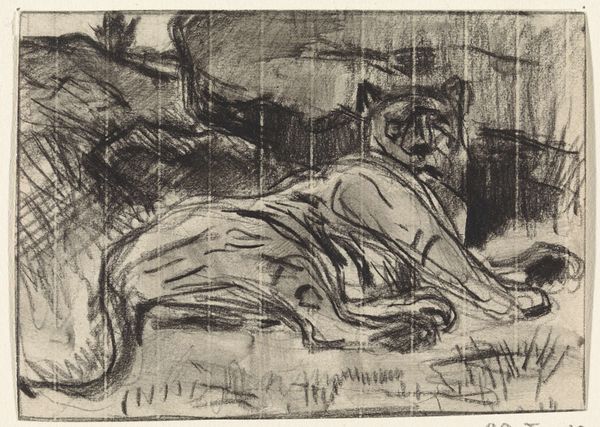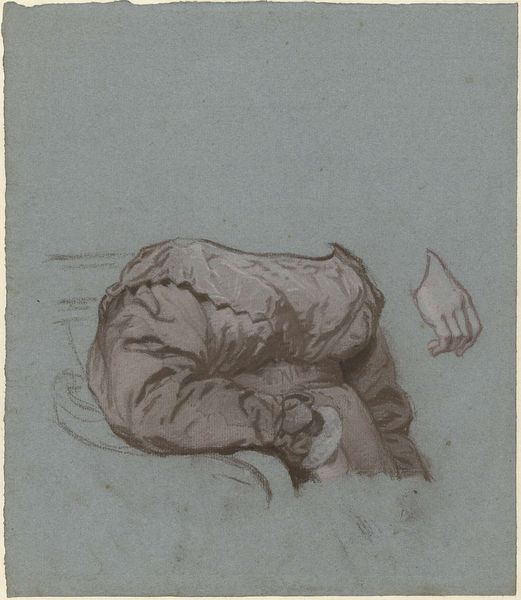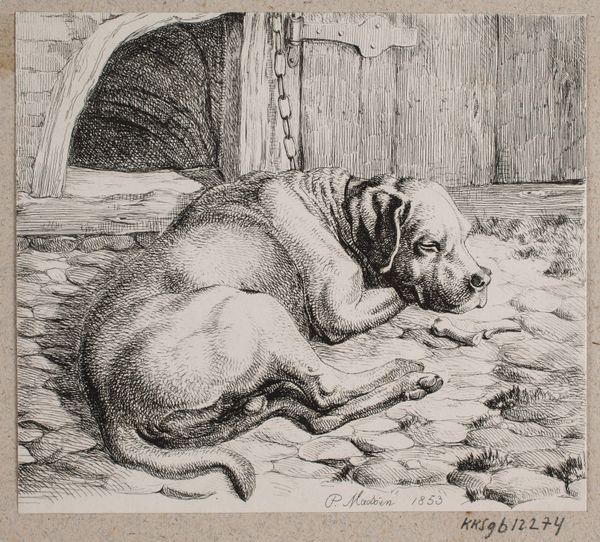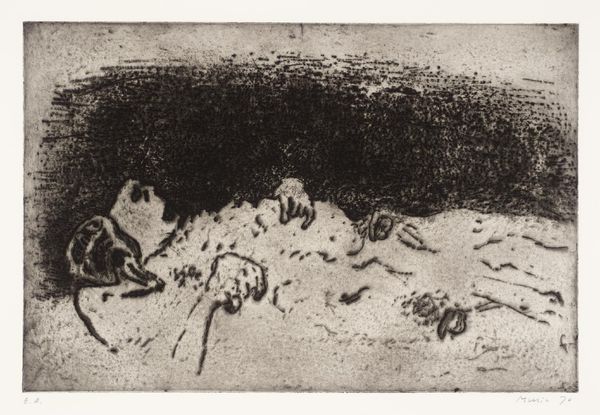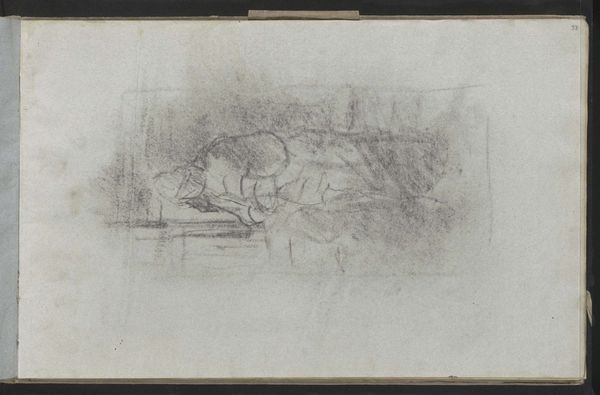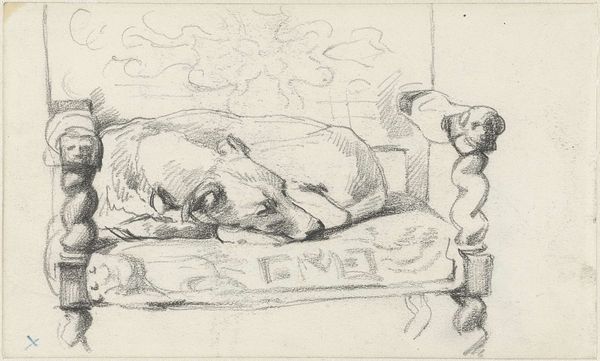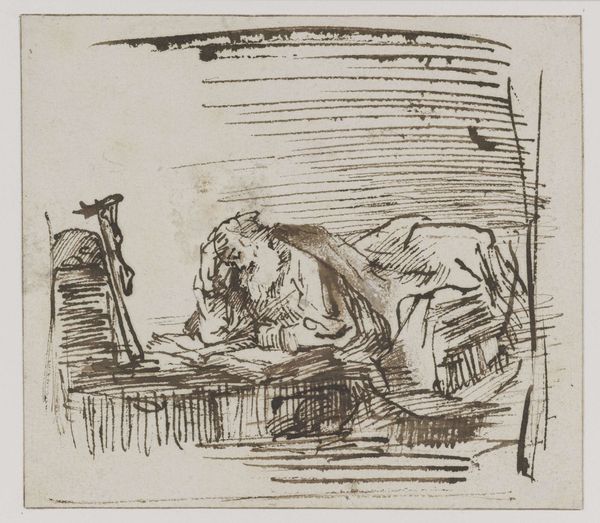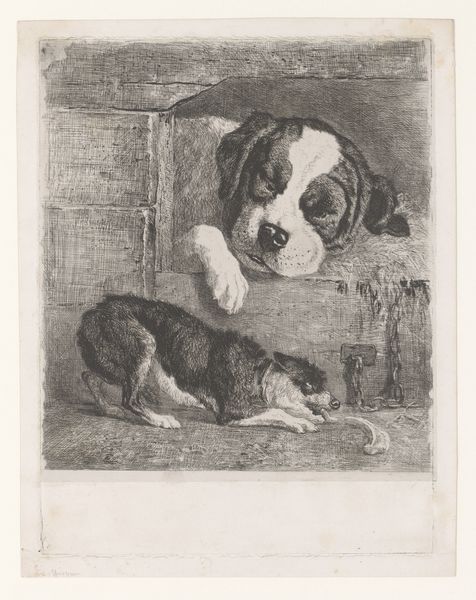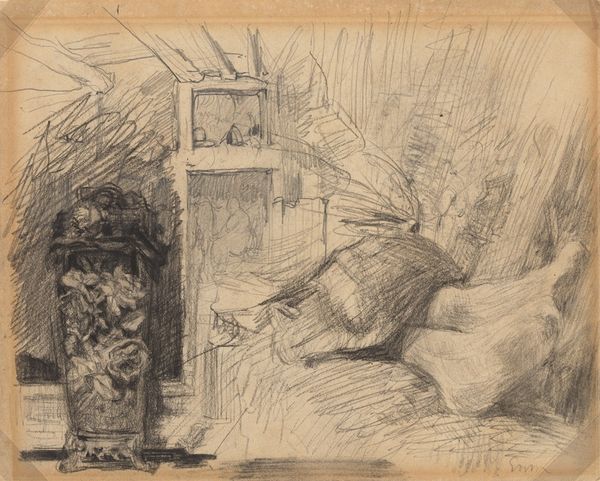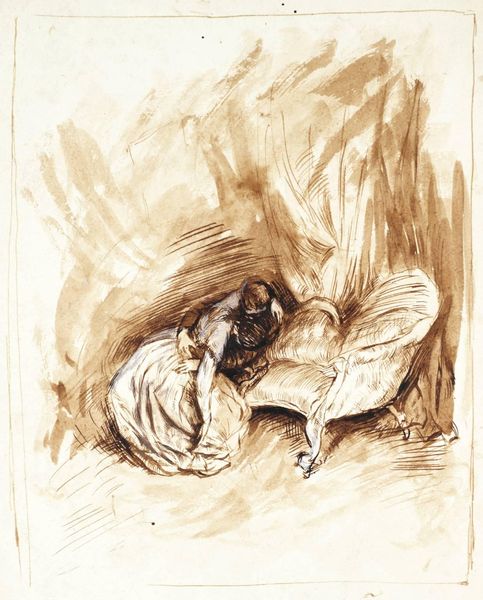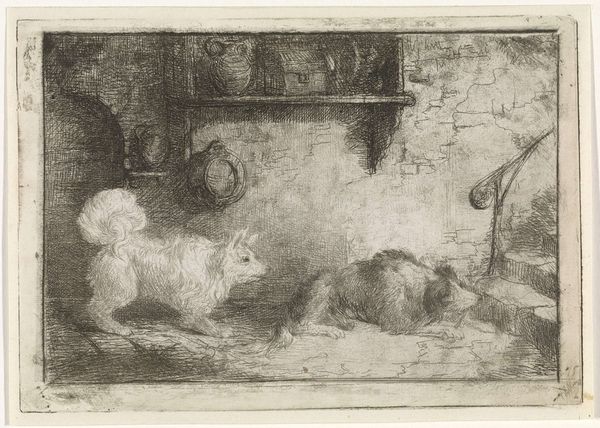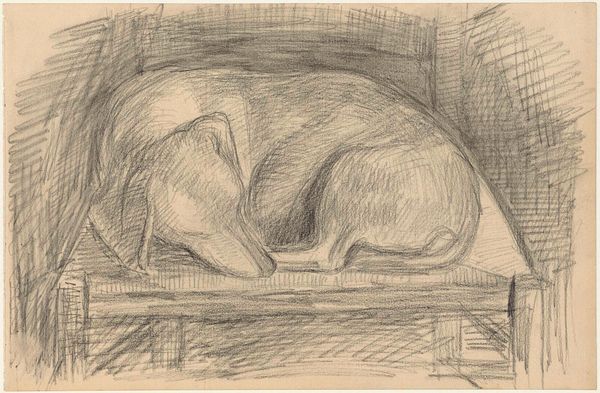
drawing, etching, ink
#
drawing
#
ink drawing
#
baroque
#
animal
#
dutch-golden-age
#
etching
#
etching
#
ink
#
genre-painting
#
realism
Copyright: Public Domain: Artvee
Rembrandt van Rijn created this etching of a "Sleeping Watchdog" using metal, acid, and ink. Etching is an indirect method of engraving, where the artist covers a metal plate with a waxy, acid-resistant layer, then draws through it with a stylus to expose the metal. Dipping the plate in acid eats away the exposed lines, creating grooves that hold ink. The deeper the bite, the darker the line that will appear. The printmaking process is labor intensive: the preparation of the plate, the careful biting by the acid, and finally the printing of the image. Here, Rembrandt uses these linear qualities to render the texture of the dog's fur, the wooden planks of the kennel, and the chain that tethers the animal. Though seemingly humble, Rembrandt is imbuing this image of an everyday working animal with artistic value. In doing so, he challenges hierarchies, elevating the so-called 'minor' arts to the same level as painting. By understanding how this print was made, and the skilled labor involved, we recognize it as a conscious artistic statement.
Comments
No comments
Be the first to comment and join the conversation on the ultimate creative platform.
